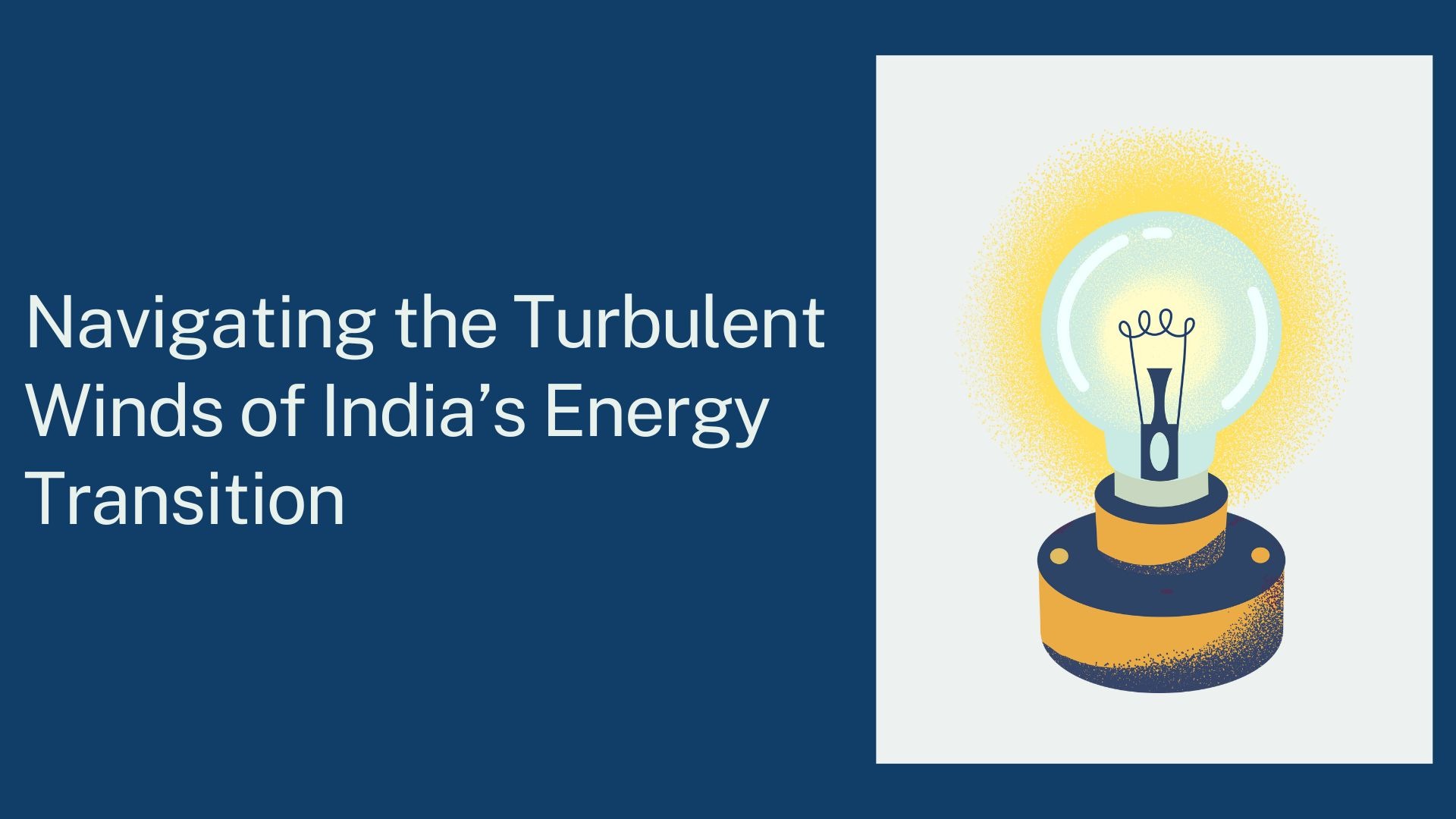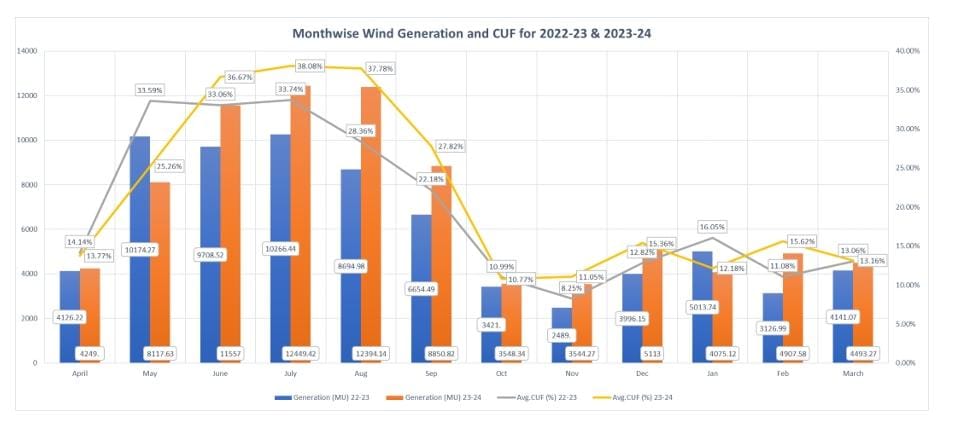BLOG
Navigating the Turbulent Winds of India’s Energy Transition

India stands at the threshold of a monumental energy revolution, poised to embrace renewable sources like never before. The vision set forth in the National Electricity Plan (NEP) charts a course for a future where solar and wind power take centre stage, becoming a substantial part of the nation’s energy mix. As we embark on this transformative journey, it’s crucial to delve into the intricacies that accompany such ambitious plans, particularly the variability inherent in wind power generation.
The Central Electricity Authority (CEA) provides valuable insights into the actual generation figures for the past two fiscal years, revealing intriguing patterns –

(Source CEA website: https://cea.nic.in/renewable-generation-report/?lang=en)
The NEP’s projections, which are instrumental in shaping India’s renewable energy landscape, paint a promising picture. They anticipate solar and wind power to contribute significantly to the nation’s energy portfolio by 2031-32. However, a closer examination of actual generation data reveals a stark reality that demands attention. Despite assumptions of a 24.1% Capacity Utilization Factor (CUF) for wind plants, recent figures suggest a significant shortfall, with observed CUF values falling below expectations in both fiscal years analysed.
This discrepancy underscores the unpredictability of wind energy harnessing, highlighting the need for proactive and adaptive strategies within India’s energy transition plan. Seasonal variability further complicates matters, with wind power generation fluctuating significantly throughout the year. While months like May, June, and July boast higher wind speeds and subsequent generation, the months from October to April witness a downturn in production, posing operational challenges for grid management.

The implications of overestimating CUF are not just statistical disparities; they have far-reaching consequences that could hinder India’s energy transition progress. The risk of energy shortfall, leading to supply shortages and reliability issues in meeting electricity demand, is a significant concern. Financial costs and resource misallocation also loom, potentially impacting investor confidence and project viability. Grid stability challenges and questions regarding policy credibility further compound the issue, threatening to derail the nation’s renewable energy ambitions.
Moreover, there’s an urgent environmental imperative at stake. India’s commitment to reducing greenhouse gas emissions and combating climate change hinges on the successful deployment of renewable energy sources. Any delay or deviation from targets could exacerbate environmental challenges, undermining efforts to achieve a sustainable future.
Precise forecasting and pragmatic goal setting, as guiding principles, emerge as crucial in addressing these challenges. It’s vital that India’s energy transition plan reflects a comprehensive understanding of the complexities involved, integrating technological advancements and policy interventions to mitigate the impacts of variability. Investments in energy storage, grid modernization, and demand-side management initiatives are crucial elements of a comprehensive approach aimed at ensuring a smooth transition to a renewable-centric energy landscape.
As we chart a course toward a greener, more sustainable future, let us heed the lessons learned from the winds of change blowing through India’s energy transition. By embracing realism, innovation, and collaboration, we can navigate the turbulent currents ahead and steer toward a brighter tomorrow—one powered by renewable energy and fuelled by our collective commitment to a cleaner, greener planet.
(Disclaimer: The views expressed in the blog are solely of the author and do not reflect views of his institution or association)
